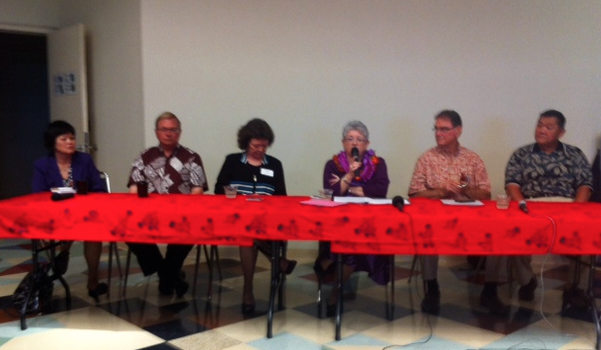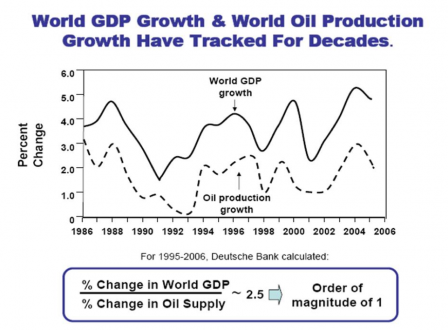It’s the start of a new school year, and we are kicking off our fourth annual Adopt-A-Class project. This is where we ask if you’ll give a little bit to help students at Keaukaha Elementary School take field trips.
Why Keaukaha Elementary? Early on, when Richard became interested in the Thirty Meter Telescope, at that time “possibly slated” for Mauna Kea, he noted that the multi-million dollar telescopes atop the mountain sacred to many Hawaiians were not benefiting the Hawaiian community at all.
He focused in on Keaukaha as one of our most Hawaiian communities. He learned that students at the elementary school there only took walking field trips to sites near their school, due to lack of funding. He and his friend Duane Kanuha decided to ask the community to help.
***
It’s been four years since then, and truly amazing things are happening at Keaukaha Elementary School these days.
For a very long time, it was near the bottom of the list in all rankings and achievement. And when the federal No Child Left Behind (NCLB) program started, Keaukaha Elementary was one of the first in the state to be put on corrective action – after what its principal Lehua Veincent describes as “years of struggling to meet state standards.”
Under his leadership and during his first two years as principal, the school met federal standards in 2007 and 2008, and in 2008 it was one of seven schools in the state to exit restructuring status under NCLB.
Kumu Lehua has had a phenomenal impact on Keaukaha. (If you know him, you won’t be surprised to hear that he’s quick to acknowledge the importance of his “dedicated and committed faculty and staff, and the collaboration with community and business partners”).
To Kumu Lehua, though, this whole topic is about so much more than merely academics. He talks about the change in behaviors and attitudes – social aspects that are not accounted for under NCLB.
“When we see 550 people come to our Open House, as they did two weeks ago, that’s powerful,” he says. “When we have 15 kupunas that come and have our children go and sit on lauhala mats and listen to our stories of Keaukaha, that’s powerful. When we’re able to take the entire school, 350 students, and have them chant and hula in unison, that’s powerful. Those are the things that set us apart from everyone else. They are our uniqueness, our spirit.”
He said they always have to remember the school’s mission: “That our children are proud of who they are and where they come from.”
***
In 2007, we did our first Adopt-A-Class campaign, and met our goal of raising enough for every class at the school to take one field trip both semesters. The cost per field trip per class is about $600 (that’s for bus, admissions, etc.); classes sometimes find ways to use that amount to take more than one field trip per semester.
Students have taken their huaka‘i, their field trips, to Hamakua Springs Country Farms, Waipi‘o Valley, Mauna Kea, ‘Imiloa Astronomy Center and more. “Our 4th graders went up to Mo‘okini Heiau and spent a whole day there,” says Kumu Lehua, “learning the whole historical perspective of why it exists. It was a wonderful day for them.” See the links above for some past stories we’ve done about the kids’ excursions. Here are some of the students’ thank you notes.
Kumu Lehua says what’s important about the Adopt-A-Class program is taking the learning into other places where some of the skills and concepts they learn about in class are more easily visible, in a setting that has been discussed, learned about. “That’s where the application becomes a little more real,” he says. “Everything is so focused on reading and math, but not necessarily making connections between those skills and the outside.”
He says that Adopt-A-Class has brought about a lot of other opportunities for the school.
“People hear about Adopt-A-Class and they donate,” he says. “They tell other people, and people tell people, and you have a slew of people wanting to help, whether it’s with snacks, events, opportunities.”
***
These days the school philosophy centers on “Maoli Keaukaha,” the spirit of Keaukaha. Everything they do, explains Kumu Lehua, ties into one of five key points that make up the spirit and uniqueness of Keaukaha – genealogy, history, place, language and traditional practices.
“It’s the spirit of Keaukaha,” he says. “It’s what you cannot find anywhere else.”
***
Can you adopt a class? You or your company can donate $100 toward the adoption of one class (it gets grouped with other donations), or $600 supports the whole class. Your donation is tax-deductible and 100 percent goes to the school.
See the Hamakua Springs website for more details and how to donate.
Mahalo.





